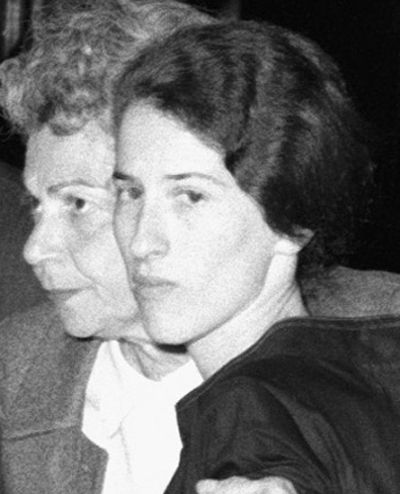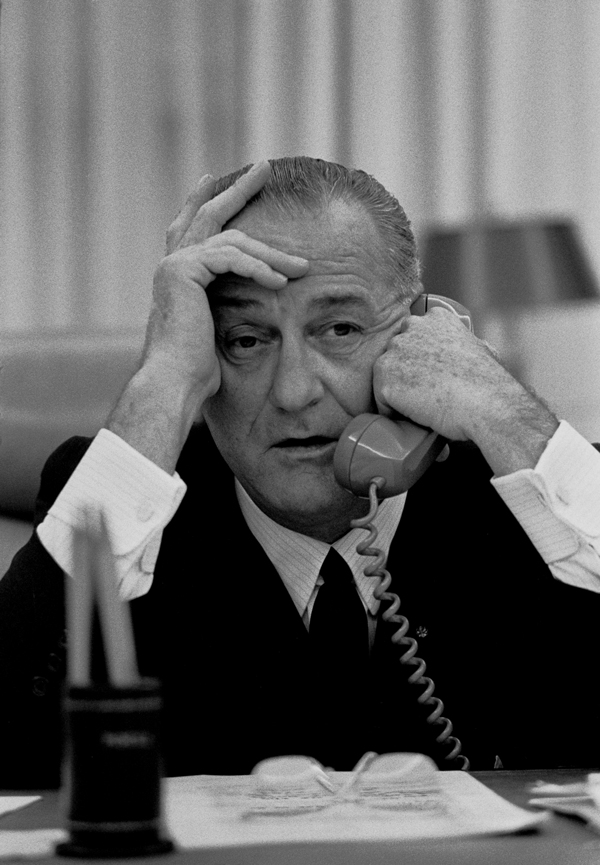There is nothing on this rotting planet more hypocritical than the amerikkkan government lecturing others on human fucking rights and other non-existent bullshit. Invading here, sanctioning there, condemning this and supporting that, and always when it's none of their fucking business.
But I guess it actually is their business, since they are exploiting and making money off of everyone everywhere. Their entire history is drenched in the blood of slaves and Native people, and they have not fucking changed. Fuck the fourth of fucking july....
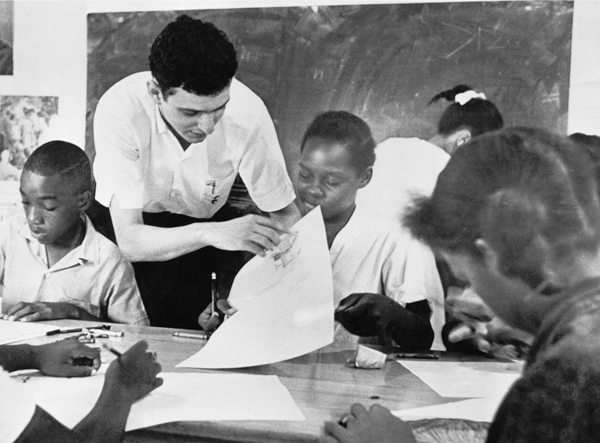
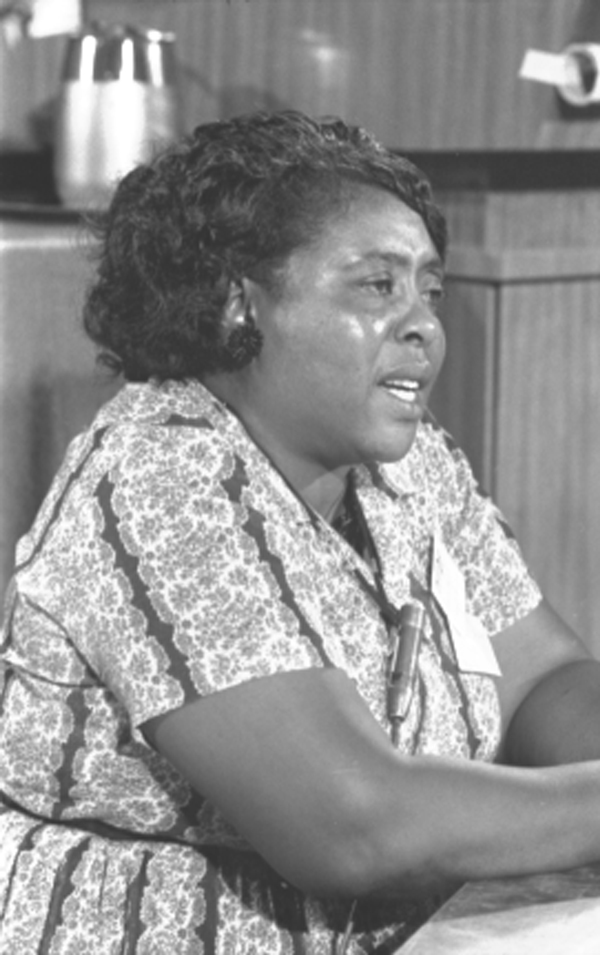
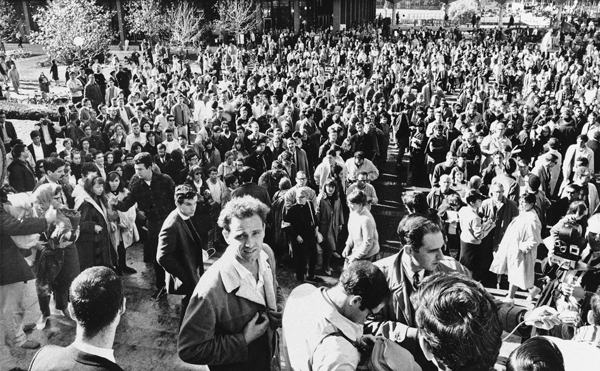
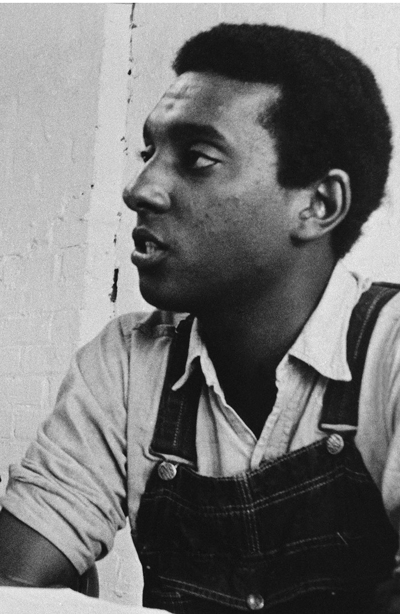
But I guess it actually is their business, since they are exploiting and making money off of everyone everywhere. Their entire history is drenched in the blood of slaves and Native people, and they have not fucking changed. Fuck the fourth of fucking july....
Mississippi Freedom Summer—Deep and Important Lessons
June 30, 2014 | Revolution Newspaper | revcom.us
To the editor:
On Tuesday, June 24, PBS showed a special film on Mississippi Freedom Summer, by Stanley Nelson. (See: "Interview with Filmmaker Stanley Nelson: Freedom Summer.") I was emotionally moved and intellectually provoked, in many ways and on many levels, as I watched this film, and afterward. The film captures the richness and contradictoriness of that experience. Everybody should see it—let the whole thing wash over you, in all its dimensions. And there would be much to write (and much that has been written), in another context, on the whole movement of that time—its strengths and weaknesses, the ways in which people saw what they were up against and what they thought would solve things, why and how the system of segregation arose after the Civil War and its connection to the growth of capitalism-imperialism. Much of that should be gotten into. But now, at a time when the movement for revolution, and the Party at its core, is attempting to make an urgent leap in societal impact, I feel compelled to try to draw out and underline what struck me as some points that might have some particular bearing on today’s juncture—even as the goals, means and terms of Mississippi Freedom Summer were particular to that time and place.
Freedom Summer: Racial Oppression and Voter Suppression
The film explains how a small core from the Student Non-Violent Coordinating Committee (SNCC) had moved into Mississippi to register voters. At that point, less than seven percent of Black people in Mississippi were allowed to vote; and this was one extreme aspect of an entire system of segregation and terror that WAS Mississippi society at that time. One powerful element of this film is the way in which people who were brought up in Mississippi talk about how the system of white supremacy was drummed into people in virtually every social interaction with white people. Those who fought any form of this ran into extreme repression—people were brutally beaten, jailed, driven from their jobs and homes, and very often killed in Mississippi in the early 1960s for getting active in this struggle. Medgar Evers, the head of the NAACP in the state, was assassinated in his driveway in June 1963. And yet, while this repression was known and felt to be an outrage among many Black people and a section of white college youth, it did not really hit the whole society. The heroic people working in Mississippi were making some progress but overall could neither make the system budge nor rally the masses on a large scale, and were straight-up being murdered in their efforts.

In 1964, the Student Non-Violent Coordinating Committee (SNCC) invited 800 students, mainly white, to Mississippi as part of the resistance to the terror and segregation against Black people. On the basis of good orientation, these students played a critical role in drawing the attention of the world to the outrages in Mississippi. At the same time, they gave encouragement to the people. Even more important, the masses in Mississippi, the students who came down, and the whole society learned a tremendous amount about the nature of this system. Above, a classroom in a Freedom School set up by SNCC and the volunteers. Photo: AP
The film outlines a struggle within SNCC over what to do about this. A proposal was made to bring 1,000 college students down to register people to vote—to both have an impact on the masses in Mississippi but even more so to affect the terms in the entire society. The thinking was that those many people coming to Mississippi (including the fact that most of them would be white) would force things to a whole other level, where millions of people throughout the U.S. and the world would be compelled to pay attention. Within SNCC, many of the seasoned grassroots organizers opposed this move—they argued that the hundreds of college students (again, mainly white) would have no idea of how to work with people coming from a totally different background, they could undo much of what had been painstakingly built up by the SNCC cadre, and so on. But others in SNCC argued that only a bold move like this would actually have the potential to compel the attention of the whole society and thereby change the terms. At one point in the film, Charlie Cobb—one of the core SNCC people who initially, at least, opposed the move—tells of being confronted by Fannie Lou Hamer, the courageous Mississippi woman who had endured blacklisting, beatings and threats for daring to resist the segregationist system. She went up to Cobb, as he tells it, and asks him why he's opposing these people coming—"Well, Charlie," she says, "I was glad when you came—what's the problem with more people coming down?" In the event, it was very important that SNCC provided leadership and orientation for the volunteers, which included significant struggle with them; and the lines of leadership were clear. On that basis, the volunteers fanned out across the state and, as it turned out, the coming of the volunteers, combined with other factors, did take things to another level. The point: There are no "outsiders" in the battle against oppression; and sometimes "outsiders" are needed to compel attention to a heavy "local" situation.
Very shortly, the powers-that-be in Mississippi made clear their response. As the main corps of the students were literally getting on the buses to come south, vigilantes working in tandem with the police kidnapped and murdered three of the SNCC organizers—James Chaney and Michael Schwerner, who were core SNCC organizers, and Andrew Goodman, who was one of the first wave of students. The bodies were hidden and that uncertainty almost made the terror worse. But the students came anyway. The movie brings out very strongly the kinds of terror that they faced—which was essentially a taste of what Black people in Mississippi faced all the time if they dared resist, and much of the time even if they didn't.1 But the student volunteers held firm; and this, no doubt had an important influence on the people they were trying to reach. The point: Serious struggle is met with bitter repression and people must hold firm to advance in the face of that.
This outrage put Michael Schwerner's wife—who was also a core organizer—under a spotlight. Even while bearing the terrible uncertainty about the three missing volunteers, including her husband, and at the same time the grief ofbasically knowing what had happened, Rita Schwerner understood that much was demanded of her. She tells in the movie how Lyndon Johnson, the president at the time, tried to position himself as "sympathetic"—she wasn't having it, and instead took advantage of the White House visit to demand that they make a serious effort to find out what happened and catch the killers. The film literally plays tapes of Johnson complaining about Rita Schwerner's attitude to J. Edgar Hoover, the vicious head of the FBI—you hear both how callous these two are and how fearful they are of Rita Schwerner and how she makes them look. Then, when the official news came that the bodies had been found, she refused to give the press the story they wanted of the "grieving, crying widow" or the "poor little white girl," and instead fought to keep things focused on what was being done to those who stood up in Mississippi and those who organized them to do so. The point: At every step, no matter how heavy the pressure, you have to fight to set the REAL terms of things.
Another important aspect of this movie: the ways in which the students transform the people they encounter, and the way that they in turn are transformed. For all the culture clash and awkwardness and, no doubt, insensitivity, a real bond is forged. The students bring something different. To the Black masses in Mississippi, they represent both the fact that there are people who support them and are willing to put things on the line for them and that there is a whole different way the world might be. The film lets you see this in people who were young people and even children back then talking about the long-lasting impact of the freedom schools that SNCC and the student volunteers set up that summer, or of just the human contact with people. And the interviews with those who were students also show people who were changed in profound and lifelong ways by the experience. Point: The cauldron of struggle, including the ways in which people from different backgrounds are brought together and learn how to stand firm as one against the enemy while they mix and mesh, and the new community that is forged through that, can profoundly transform people.
I also want to call attention to the powerful and moving speech given by Dave Dennis at the memorial for James Chaney. As Chaney's younger brother Ben is crying over the loss of his brother, Dennis—who had been told to "keep people calm"—could no longer take it. You see him directly challenge the masses, at the funeral and more broadly: "Don't bow down any more!" he says. "STAND UP!"2 The struggle that DID go on between the SNCC members and the masses broadly was a very important and usually little-noted dimension of this whole experience; here I want to strongly recommend the memoir of Anne Moody, Coming of Age in Mississippi, a Black woman who grew up there in the 1950s, joined the struggle, and who examines some of the ways this went down and how it felt. The film also gives emphasis to the important point that the SNCC core and the new students also had to be good at listening. Point: Leaders have to both listen AND they have to dare to lead, and sometimes that means sharp struggle with the masses.
At the same time, ways were found for all different kinds of participation to take place, and for people to “move through” a process. The Mississippi Summer Project, when you think about it, wasn’t huge; counting the SNCC people already there, it probably numbered less than 1,000 people. But the organizers found lots of ways for people to participate. There were the volunteers themselves, and the fund-raising that went into the whole project—which is a way for a lot of people beyond the core to contribute to changing the world. In Mississippi itself, there weren’t huge marches, and the film describes how for most of the summer only 10 or 12 people would come to “mass meetings,” and very few people were ready to take the step to go down to the registrar and put themselves on the line in that way. But all that summer grassroots people would house volunteers; they would send their children to freedom schools, and sometimes go themselves; they participated in the process of choosing the Mississippi Freedom Democratic Party slate for the convention. Artists would give concerts, and—while this particular element is not in the film—there were also demonstrations in some northern cities against the federal inaction on the murders of the civil rights workers. All the while, in different ways, things built. Then the film describes how at the very end of the summer things “took” and there was a leap and you had 50 or 60 or 70 people turning out every night to mass meetings. But this element of mass participation, in many different forms, from the beginning was crucial to what were really a relative handful impacting millions.

SNCC organized people to go to the Democratic National Convention to demand to be seated as the lawful Mississippi delegation, due to the terror that the regular Democratic Party enforced against Black people. They pointed to the illegitimacy of the regular Mississippi Democratic Party. They fought to get their story out, and refused a paltry compromise that the Democrats and the mainstream civil rights movement tried to force on them. Fannie Lou Hamer, above, was a sharecropper who stood up against beatings and blacklistings and threats on her life to become a mass leader. Photo: Library of Congress
And, in fact, the whole Freedom Summer effort did focus everyone's eyes on Mississippi. This bold move DID have societal impact. Things came to a head at the Democratic National Convention at the end of the summer. The SNCC people formed an alternate slate of delegates to the convention, under the name of the Mississippi Freedom Democratic Party (MFDP). They argued that since the regular Mississippi slate was the product of a system which did not allow Black people to vote, it was unconstitutional; they would insist that an integrated delegation, chosen in a process in which everyone had the right to vote, should be seated instead. Johnson, the president, made a number of crude attempts to take the focus away from this; but the insistence of the MFDP on justice and on righteously telling the truth forced these moves to essentially backfire. Fannie Lou Hamer—who had grown up as a sharecropper and come forward from among the masses as a mass leader and testified at the convention—made an extremely powerful impact on people all over the world, refusing to be impressed by or to back down to those in power who were working on her to compromise, keeping in mind who and what she was representing, as she saw it.
In the face of this—and again, the movie utilizes tape recordings that Johnson himself made—Johnson coordinated different allies (including Black elected officials and the established civil rights leaders) to bring pressure to bear on the MFDP, and especially on the delegates from other states who were sympathetic to them and the United Auto Workers union lawyer who had been helping them, to cave in. And you also get to hear him telling the people he is deploying to pretend as if this was their own idea. It is very clear—on any issue of significance, the ruling class rules, using everything they have to enforce their will.
Yet at the same time, they are NOT all-powerful. Yes, these forces headed by Johnson defeated the particular challenge—but the way in which these pigs did it, and the fact that the MFDP and SNCC held firm in refusing the compromise that they had been offered, ended up as a strategic political defeat for the ruling class. Many, many students and Black people became much more radical as a result of this betrayal, and not just those who were on the scene. The Free Speech Movement at Berkeley, which arose several months later, is unimaginable without Freedom Summer—not only because some of the key organizers had been tempered in that, but even more due to the ways in which the thinking of millions had been broadly influenced, and transformed, even in beginning ways, through all that. In fact, it is very telling that Johnson at one point has what amounts to a nervous breakdown for several days over this and is clearly very panicked about the challenge that has been brought against him—again, you hear this in his own words (and you also hear Johnson's bone-deep racism come out as well—in fact, another strength of the film is how powerfully it draws out how this society was saturated, from top to bottom, with racism—something that has not fundamentally changed since 1964). Point: The rulers of this society are NOT all-powerful; they do not have everything under their control, especially when people refuse to bow down to them.

A whole section of people and leaders were radicalized by the 1964 experience. Three months later at Berkeley, students who had been in Mississippi led the Free Speech Movement, which marked a leap in the student movement at that time. Stokely Carmichael was one of the SNCC leaders who went on to play an important role in the Black liberation struggle that rocked the U.S. in the latter part of the '60s.
Above: University of California, Berkeley students at a Free Speech Movement protest in 1964. FSM spokesman Mario Savio is in the foreground facing the camera. Photo: AP
Below: Stokely Carmichael, 1966. Photo: AP

Finally, the film shows—in part—what came out of Freedom Summer. And here is where there is a particular weakness, even as there are still lessons to draw. In the end, the ruling class was forced to make concessions—in fact, a year later the Voting Rights Act was passed (this came after still more struggle that focused world attention on the situation in the U.S.). The film makes the point at the end, as sort of a conclusion, that Mississippi later had the highest number of Black elected officials of any state. But while it is important to bring out the ways in which people's struggle led to some not insignificant change, the film does NOT bring out that the conditions of Black people in Mississippi today remain horrific in fundamental ways and in many dimensions—i.e., that voting within the confines of this system did NOT lead to the kind of basic change needed by the massesin Mississippi and that in significant respects things are worse. Focusing on the election of Black officials objectively ends up obscuring and cutting against that point. In doing this, the film reflects in part both the limitations of the movement at the time and the related fact that the movement was still struggling for some basic bourgeois-democratic rights.
At the same time, on the other side, the point is also made at the very end, right before that “concluding sentence,” that many in SNCC, to paraphrase Bob Avakian, followed their convictions out to their logical conclusions, refusing to stop fighting and questioning so long as the outrage that drove them into action persisted. These forces began to turn to much more radical solutions. Stokely Carmichael from SNCC, who later became a revolutionary and a lifelong opponent of U.S. imperialism, is seen very militantly leading a Mississippi crowd in chanting "Black Power!"—which at the time had an extremely radical and militant social content, and was posed in direct opposition to the mainstream of the "civil rights movement." SNCC in fact had run up against the limits of the road that they had taken; and one section (which included Carmichael, H. Rap Brown, and others) went on to play an important role in further radicalizing the movement, and American society, over the next several years.
Lenny Wolff
1. Dave Dennis, a core SNCC organizer at the time, has made the point elsewhere that, “During the time they were looking for the bodies of Chaney, Schwerner, and Goodman, they found other bodies throughout the state. They found torsos in the Mississippi River, they found people who were buried, they even found a few bodies of people on the side of roads. As soon as it was determined that these bodies were not the three missing workers, or one of the three, those deaths were forgotten. That’s what we were talking about in terms of what the Freedom Summer was all about, in terms of why it was necessary to bring that attention there. Because people forgot, and if it had just been blacks there, they would have forgotten again. It would just have been three black people missing.” (See Voices of Freedom, the book compiled from the documentaryEyes on the Prize, p. 194) [back]
2. A longer part of this speech is captured in the documentary 1964, also well worth watching. [back]

